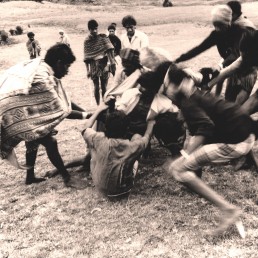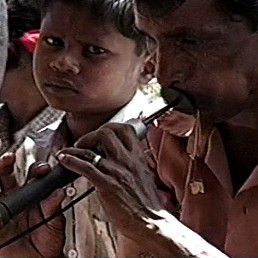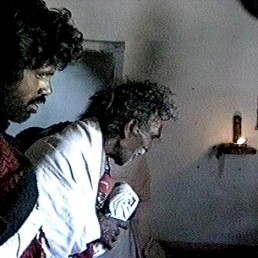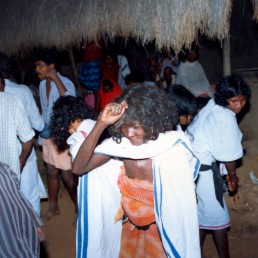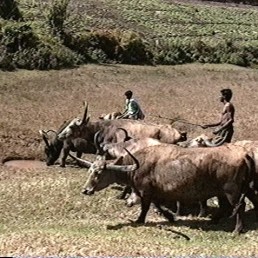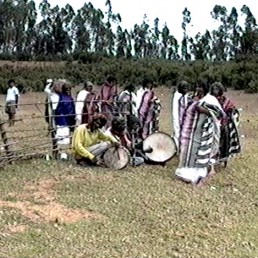When I first arrived in the Nilgiris in September of 1990, I knew that I had the luxury of two years’ time and funding for field research and intended to spend the initial months attending a diverse range of festivals, rituals, and other events involving music in order to gain a broad sense of Nilgiri cultures and how they related to those of the plains, mainly in Tamil Nadu and Kerala. I knew, however, that I wanted eventually to work on the music of one tribe, and that meant investing significant time in learning at least one local language in addition to Tamil (which I already spoke at the time). I ultimately decided to focus on the Kotas because they possessed a complex system of rituals intimately tied to their own music, because the fieldnotes and publications of David G. Mandelbaum and Murray B. Emeneau would make it possible to approach research historically as well as ethnographically, and perhaps most importantly, because the Kotas themselves welcomed my presence and were interested in my documenting virtually all aspects of their culture.
From reading the copious studies of the Nilgiri peoples—and particularly the work of Anthony Walker who had insisted that the Todas, who had long been exoticized in the writings of early visitors and ethnographers, were very much part of the larger south Indian world in which they lived—I realized the importance of balancing a microscopic view of Kota life with a broader view of the Nilgiri region and beyond. For this reason, what began as exploratory research into the music of each of the Nilgiri tribes (and of the Tamils and Malayalis of the area as well), continued sporadically even after I settled into Kolmel village and delved deeper into my Kota specialization.
The tribal people of the Nilgiris had traditionally been listed as four in number—Toda, Kota, Irula and Kurumba—with a fifth community, the Badaga, in an ambiguous category because they were relatively recent immigrants (probably from the 16th century onward) from what is modern day Karnataka. The situation is far more complex. The Kurumbas themselves are not a single community but at least five: The Ālu Kurumbas and Pālu Kurumbas occupy the nearby slopes of the upper Nilgiris along with the Irulas; the Beṭṭa Kurumbas, Mullu Kurumbas and Kāṭṭu Nāyaka/Jēnu Kurumbas live further to the north at a lower elevation and their populations extend into Kerala and or Karnataka. The Badagas, whose culture and history have been thoroughly documented by anthropologists Paul Hockings and Frank Heidemann, are descended from many different Hindu groups and remain organized into sub-groups. They are by far the most numerous (upwards of 25,000) of the Nilgiri people in the upper Nilgiris—the Nilgiri plateau. The populations of the Kotas and Todas, by contrast, remain under 2,000 each. I am unaware of the population numbers for the Kurumbas, but in the northern Nilgiris, Wynad Kerala, and in Karnataka, the three groups are said to have populations that extend into the 10s of thousands.
As alluded to above, the Nilgiri peoples are divided geographically into those who primarily occupy the central plateau, the Todas, Kotas, and Badagas; those who occupy the slopes, the Ālu and Pālu Kurumba and Irula groups; and those living at lower elevations in or near the Wynad of Kerala, including the other Kurumba groups as well as the Paniyas, the Wynad Chettis, and other groups.
Traditionally, they formed two separate but interrelated social-ritual-economic systems which involved exchanges of goods and services. From a musical perspective, the Kotas, Irulas, Ālu Kurumbas, Pālu Kurumbas, and Kāṭṭu Nāyaka/Jēnu Kurumbas have played almost identical types of instruments. For worship, funerals, and dancing, each of these tribes plays its own version of a wooden double-reed instrument with a conical bore. It’s name in each case is cognate with the Tamil word for “any tube shabed thing” (kuḻal, DEDR 1818). The melody of this instrument, which is often called by the same name as the instrument itself, is accompanied by two or more cylindrical drums, sometimes distinguished by low and high pitch/timbres, and a frame drum. These too have names cognate with one another. Terms for the cylindrical drums are related to the Tamil word paṟai (DEDR 4032), and those for the frame drum are related to the Tamil word tampaṭṭam (DEDR 3082). Although none of the melodies, to my knowledge, are identical (although perhaps some Irula and Kurumba groups do share specific melodies), each of the tribes uses its melodies to index and in some cases to define or constitute specific rituals. All of the tribes have at least one funeral melody, for example, and the Kotas have dozens. The percussion patterns, by contrast, are mostly shared. One common one is in simple duple (see tiruganāṭ on Kota page); another is in compound duple (6/16 or 7/16); and a third is a ten-pulse pattern divided 3+2+2+3.
On the Nilgiri plateau, the Todas were traditionally occupied with caring for their buffaloes and performed elaborate rituals that yielded milk, buttermilk, butter, and clarified butter. They have been known (rarely) to play the delicate and haunting bamboo trumpet (puxury), an instrument also played by the Kotas (bugīr) (see video on Kota page), the Irulas (bugari) and the Ālu (buguri) and Pālu (bugiri) Kurumbas. Musically, the Todas are most well known for their songs, which have been documented extensively by Murray B. Emeneau and more recently by Peri Bhaskararao.
References
Burrow, T. and Murray B. Emeneau. A Dravidian etymological dictionary. 2nd ed. Oxford [Oxfordshire]: Clarendon Press, 1984.
